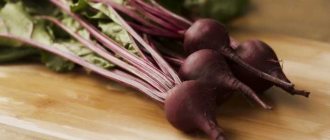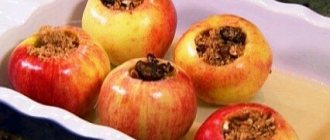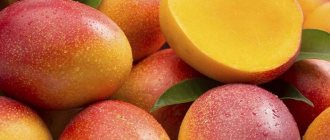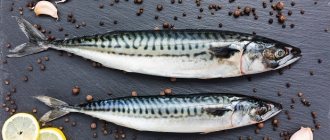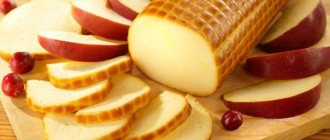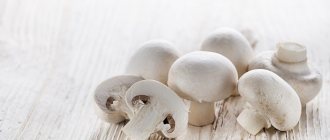A little about the salad
Paradoxically, people rarely include lettuce in their diet. Its calorie content is quite low, and therefore you cannot get enough of it. This product often serves as a decoration for holiday dishes, which are generously topped with mayonnaise. If we talk about supporters of diets and proper nutrition, then they know the price of fresh lettuce well. It is worth noting that at the moment there are more than 1000 varieties of salads in the world. This is an annual (in some cases biennial) plant that belongs to the Asteraceae, or Asteraceae, family. There are so many varieties of lettuce that sometimes even experienced gardeners get confused about them. In ancient times, this crop was grown exclusively for the oil that was extracted from the seeds. Later, tender leaves appeared on the table of the ancient Greeks and Romans. They appreciated not only the taste, but also the healing qualities of this product.
Popular lettuce varieties
The calorie content of lettuce (fresh) is very low, and it contains a great variety of vitamins and microelements. In addition, the bright color and beautiful shape make this product an excellent decoration for any dish. At the moment, the most popular varieties of lettuce are:
- Romaine is the leader among salads. It is a large inflorescence of several green leaves, which is somewhat reminiscent of cabbage. It is most often used in sandwiches or as a garnish.
- Watercress is one of the healthiest of its kind. It has a slight mustard taste, which can be explained by its high content of microelements. This is an excellent option for combating spring vitamin deficiency.
- Coral gets its name from its distinctive appearance. A light nutty flavor will add an original touch to any dish. And in terms of the amount of calcium and mineral salts, this variety has surpassed all others.
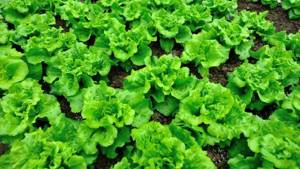
For the night
Now imagine. Trying not to eat after 18:00, you eat something for dinner at work (for example, you took a portion with you in a container), run to workout, and then come home and are literally dying to have dinner with your husband or just something eat alone. Sound familiar?
An excellent option for an evening snack is kefir with herbs for weight loss.
If you drink a glass, the feeling of hunger will be muffled, and you will not spend half the night trying to sleep, dreaming about everything that is in the refrigerator. And plus, in the morning after such a snack, hunger will wake up with you in the evening. This means you won’t miss out on a hearty breakfast.
But enough reasoning - here’s a simple recipe, which, by the way, is loved by many stars.
A couple of branches of parsley, dill, cilantro, basil, add celery greens for weight loss and mix it all in a blender. Now pour a glass of fermented milk drink - and you're done! Drink for your health.
Chemical composition
Lettuce leaves contain a huge amount of nutrients. Although the calorie content is small, this does not detract from the benefits of the product. So, this culture includes a whole vitamin complex - A, B (1, 2, 3, 4, 5, 6), C, K, E and others. Speaking of microelements, it is worth noting the presence of manganese, copper, zinc and iron (there is even more of it in salad than in apples). The leaves contain quite a lot of calcium, magnesium, potassium and phosphorus.
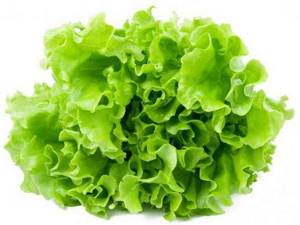
Lettuce leaves: calorie content and beneficial properties
Considering the fact that fresh lettuce leaves are characterized by extremely low calorie content and a high content of vitamins and nutrients, one can judge their exceptional benefits for the human body. So, it has the following positive effect:
- strengthens the body's protective functions;
- helps normalize the activity of the central nervous system;
- helps restore strength after illness;
- helps normalize sleep and has a mild hypnotic effect;
- accelerates the process of food digestion by stimulating the production of gastric juice;
- improves appetite;
- improves blood composition;
- removes salts from the body;
- relieves pain from gastritis and ulcers, and also promotes tissue scarring;
- due to the increased iron content, it helps alleviate the condition of heavy menstruation;
- when consumed regularly, it protects brain neurons from destruction, preventing memory problems;
- promotes the regeneration of skin cells due to the increased content of vitamin A;
- improves metabolism and blood circulation.
Thus, we can say that salad is a universal product that benefits absolutely everyone. It is also recommended for use by weather-sensitive people during periods of weather changes or magnetic storms.
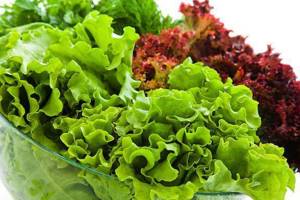
Brush
- Time: 18 minutes.
- Number of servings: 2 persons.
- Calorie content of the dish: 52 kcal/100 g.
- Purpose: lunch, dinner.
- Cuisine: Russian.
- Difficulty: accessible to beginners.
Stem celery salad for weight loss called “Brush” is prepared from raw vegetables and has powerful cleansing properties. With its help, toxins, waste and undigested food residues are removed from the body. Thanks to this, the intestinal microflora is improved, an environment favorable for the proliferation of pathogenic bacteria is eliminated, and weight loss occurs. There are many recipes for “Brush” salad, but the main property of the dish remains unchanged regardless of the ingredients included.
Ingredients:
- celery stalks, carrots, onions, beets - 1 pc.;
- white cabbage leaves – 3 pcs.;
- lemon juice – 1 tsp;
- oil (olive) – 1 tbsp. l.;
- greens - 1 bunch.
Cooking method:
- Clean and wash all ingredients.
- Grate the beets and carrots and finely chop the remaining ingredients.
- Mix all ingredients, season with oil and lemon juice, mix thoroughly.
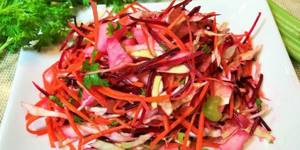
Possible harm and contraindications
At first glance, lettuce leaves seem absolutely harmless. The calorie content and composition of this culture contribute to the overall strengthening of the body. However, in some cases, excessive consumption of this product is strictly contraindicated. These conditions include:
- gout;
- bladder stones;
- colitis in acute and chronic form;
- asthma and tuberculosis;
- kidney disease (oxalic acid can cause exacerbation).
Lettuce leaves for weight loss
As already mentioned, the calorie content of lettuce leaves per 100 grams. - only 16 kcal, and therefore it is simply an ideal dietary product. If you want to lose weight, then you simply need to include it in your diet, because with low energy value it contains a huge amount of useful substances. However, this product should not be the only one on your menu. If you don't eat enough protein and fat, you risk harming your health. It is more of an auxiliary product that will be an excellent addition to fish, white meat and vegetables.
It is worth following a number of recommendations for preparing dishes with lettuce leaves:
- be sure to season the salad with vegetable oil or yogurt;
- To prevent the leaves from becoming bitter, soak them in water for a few minutes;
- It is better to chop greens with your hands rather than with a knife, so as not to expose the product to oxidation;
- Do not dress the salad in advance so that the leaves do not wilt and lose their taste.
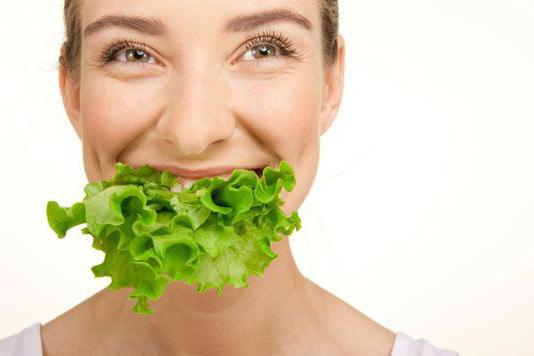
borage
Cucumber salad with chicken breast
Wash and chop the borage. Cut cherry tomatoes into halves. Grate the cheese on a fine grater to make it fluffy. Cut the chicken fillet into cubes and fry in vegetable oil, adding salt at the end. Mix all prepared ingredients. Cut white bread into small cubes. Grind the garlic and mix with the bread. Toast in the oven until slightly golden brown. Drizzle the salad with dressing. Place dried crackers on top. Sprinkle the salad with cheese.
400 g chicken fillet 100 g borage 150 g Cherry tomatoes 100 g hard cheese, such as Parmesan 100 g white bread 1-2 teaspoons lemon juice 2-3 cloves garlic 100 g vegetable oil 1 teaspoon mustard Salt, pepper, dill, parsley, spices to taste
Dressing: mix lemon juice, crushed garlic, mustard, pepper, salt, vegetable oil, dill, parsley.
Cucumber salad with ham and green peas
100 g borage 200 g ham 1 can of canned peas 1 bunch of parsley 30 g green onions 100 g mayonnaise
100 g borage 50 g boiled potatoes 30 g green onions 30 g celery 1 tbsp. spoon of grated horseradish 1 egg 100 g sour cream Salt and pepper to taste
Salad of borage, garden cress and cheese
100 g borage 100 g garden cress 50 g hard cheese 100 g sour cream
Borage can be added to any dish; it is quite capable of replacing spinach. It is added to side dishes for meat dishes, okroshka, soups, sauces, fried fish, and as a filling for pies. When pickling vegetables, borage also goes well with other ingredients. A pinch of herb added to any dish refreshes it and stimulates the appetite.
Interesting facts about salad
One of the healthiest and most affordable spring foods is lettuce. Calorie content per 100 grams is no more than 16 kcal, regardless of the variety. In terms of the concentration of vitamins and minerals, this product can compete with many vegetables. However, this is not all the information that is useful to know about the salad. So, the following interesting facts are associated with this product:
- translated from Italian, the word “salad” means “salty”, although the taste of the product is fresh or slightly bitter;
- the darker the lettuce leaves, the more nutrients they contain;
- This culture is very demanding in terms of storage: greens cannot be dried, canned, frozen or kept in the refrigerator for a long time;
- lettuce was originally a weed until the ancient Greeks appreciated its taste and health benefits (this happened about 5,000 years ago);
- At the moment, lettuce is often found both in garden beds and in stores, but in the times of the Persian sheikhs it was worth its weight in gold;
- the modern history of lettuce leaves began when Christopher Columbus brought their seeds to America;
- from the point of view of the content of vitamins and minerals, the lower part of the leaves is of greatest value.
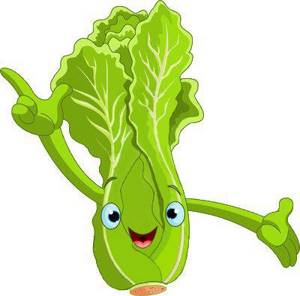
Growing Tips
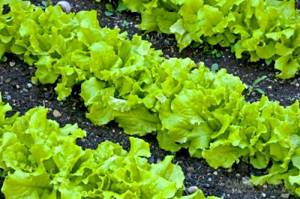
Lettuce is a cold-resistant plant that loves moisture. Head lettuce is demanding in terms of mineral nutrition. It is capable of accumulating nitrates, so it is recommended to limit feeding the plant with nitrogen-containing fertilizers. Head lettuce should not be planted in a compost bed the first year. Partial shading and lack of direct sunlight create favorable conditions for the accumulation of nitrates in the “body” of the plant.
Predecessors of lettuce: peppers, potatoes, cabbage, tomatoes, for which organic fertilizers were applied. You can grow lettuce in the same place no earlier than after 2 years.
Head and leaf lettuce can be planted next to the following garden crops: chives, spinach, tomatoes, cucumbers, beans, strawberries, peas. Its proximity to vegetables from the cabbage family is especially favorable: radish, radish, cabbage, since it has the ability to repel the flea beetle. It is recommended to plant lettuce with onions, which protect the plant from aphid invasion.
Lettuce needs partial shade; it does not like overheating. However, sowing it under trees and crops with dense foliage such as carrots and beets is unfavorable for the plant.
Principle of growing lettuce:
- Prepare the soil. Dig up the soil, loosen large lumps, and add humus in the fall. Mineral fertilizers (superphosphate, potassium salt, ammonium sulfuric acid) are applied in the spring. Soil with high acidity must be limed.
- Place lettuce seeds at a shallow depth (0.5 - 1 centimeter) and grow them in a stepwise manner: from April to May - early varieties, from April to mid-June - mid- and late-ripening varieties. Romaine is sown in early July. Lettuce can be planted in early November before winter.
Lettuce is sown in a row across the beds, keeping a distance of 1.5 centimeters between seeds, and 18 centimeters between rows. The sowing rate is 2 grams per 1 square meter.
The cabbage variety is sown in beds in single-row rows, which are spaced 45 centimeters apart. In addition, it can be grown as seedlings.
To speed up harvesting, crops are covered with film in the open ground, stretching it over a frame or arches. In the resulting “tent” you can grow Chinese cabbage.
- Harvest the lettuce 40 days after germination. Carry out the final harvest before bolting begins and eight leaves form in the rosette.
Salad in cosmetology
Lettuce leaves are useful not only for the internal systems of the body. This product helps maintain external beauty and solve a number of cosmetic problems. So, if you have dry skin, then apply a mask of sour cream with crushed green leaves twice a week. If your skin needs intensive nutrition, it is recommended to use a product consisting of lettuce pulp, vegetable oil and lemon juice. This mask will help you cope with freckles and pigmentation. If the epidermis is too dry, you can add egg yolk. During the cold season, the skin is prone to irritation and peeling. To eliminate these unpleasant symptoms, it is enough to wipe your face with a decoction of lettuce leaves several times a day. This remedy is also great for burns and insect bites. In summer, skin needs protection more than ever. If you are afraid that your face or shoulders will burn, it is not at all necessary to apply a special cream. Before going outside, apply a lettuce leaf to your skin for a few minutes, after beating it with a rolling pin or crushing it in your hands.
Calendula
Calendula or marigold grows in central and southern Europe and Central Asia. Cultivated as an ornamental and medicinal plant. Aboveground baskets contain resins, nitrogen-containing mucus, malic and salicylic acids. Alkaloids were found in the seeds.
Calendula is used mainly as an anti-inflammatory agent in the form of ointments and emulsions for the treatment of minor wounds, burns, and frostbite. Recently, data have been obtained on the antihypertensive and calming properties of calendula.
In cooking, calendula is used in the preparation of various salads, soups, liqueurs, drinks, pasta and other healthy and tasty dishes. Calendula is valued for its rich color and aroma.
Salad of calendula flowers, radishes and grapefruit
20 g calendula flowers 1 orange 1 grapefruit 1 avocado A handful of arugula leaves A few radish sprouts
For the sauce:? glass of orange juice 1 clove of garlic 2 tbsp. spoons of sesame seed paste 1 tbsp. spoon of agave syrup (can be replaced with regular sugar syrup) 5 pcs. calendula flowers
Preparation of the sauce: mix all ingredients and beat until smooth using a blender.
Calendula salad with potatoes
0.5 kg potatoes 100 g green onions 20 g calendula flowers For dressing: 100 g vegetable oil 1 tbsp. spoon 3% vinegar 1 tbsp. spoon of sugar Pepper, salt to taste


